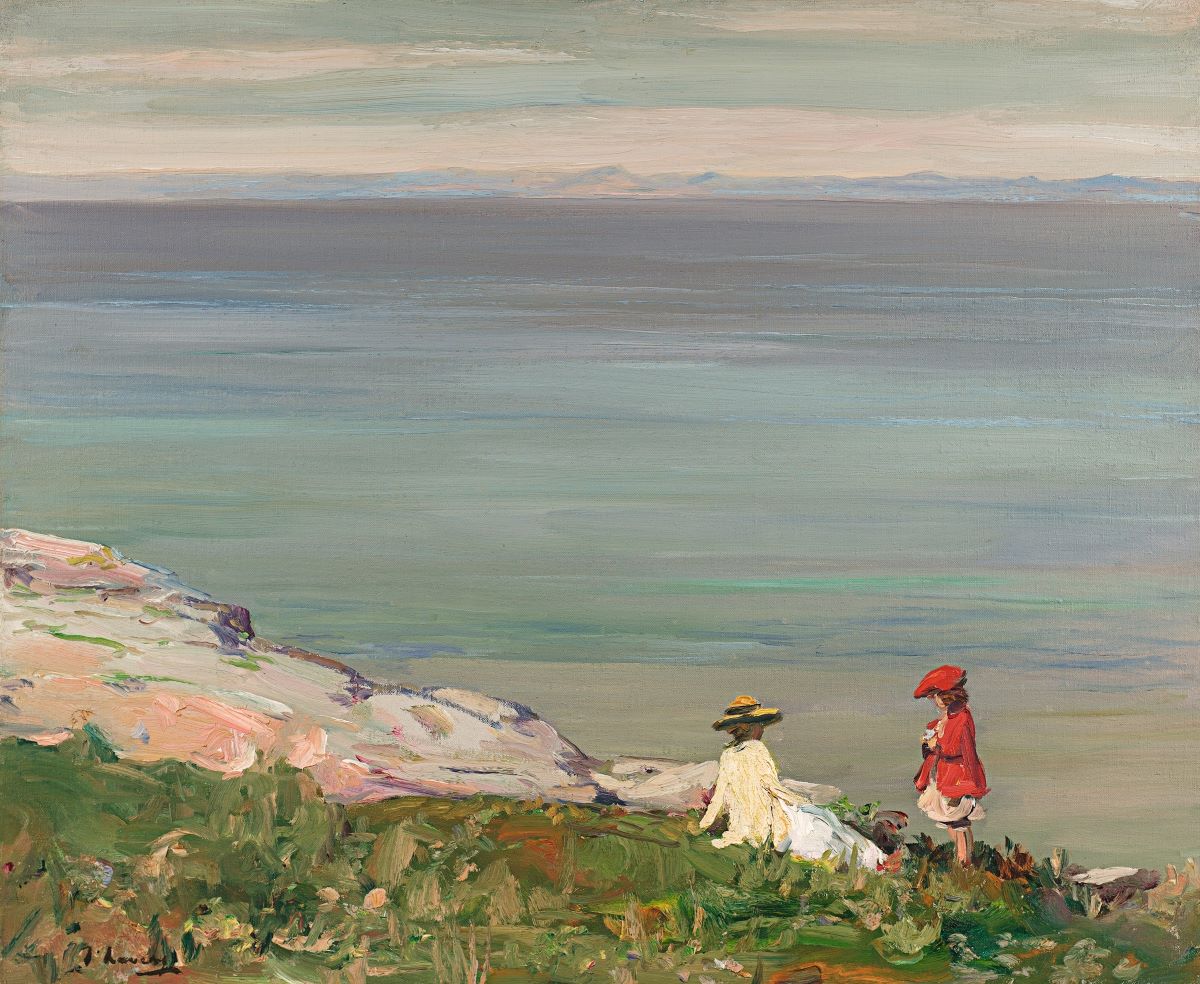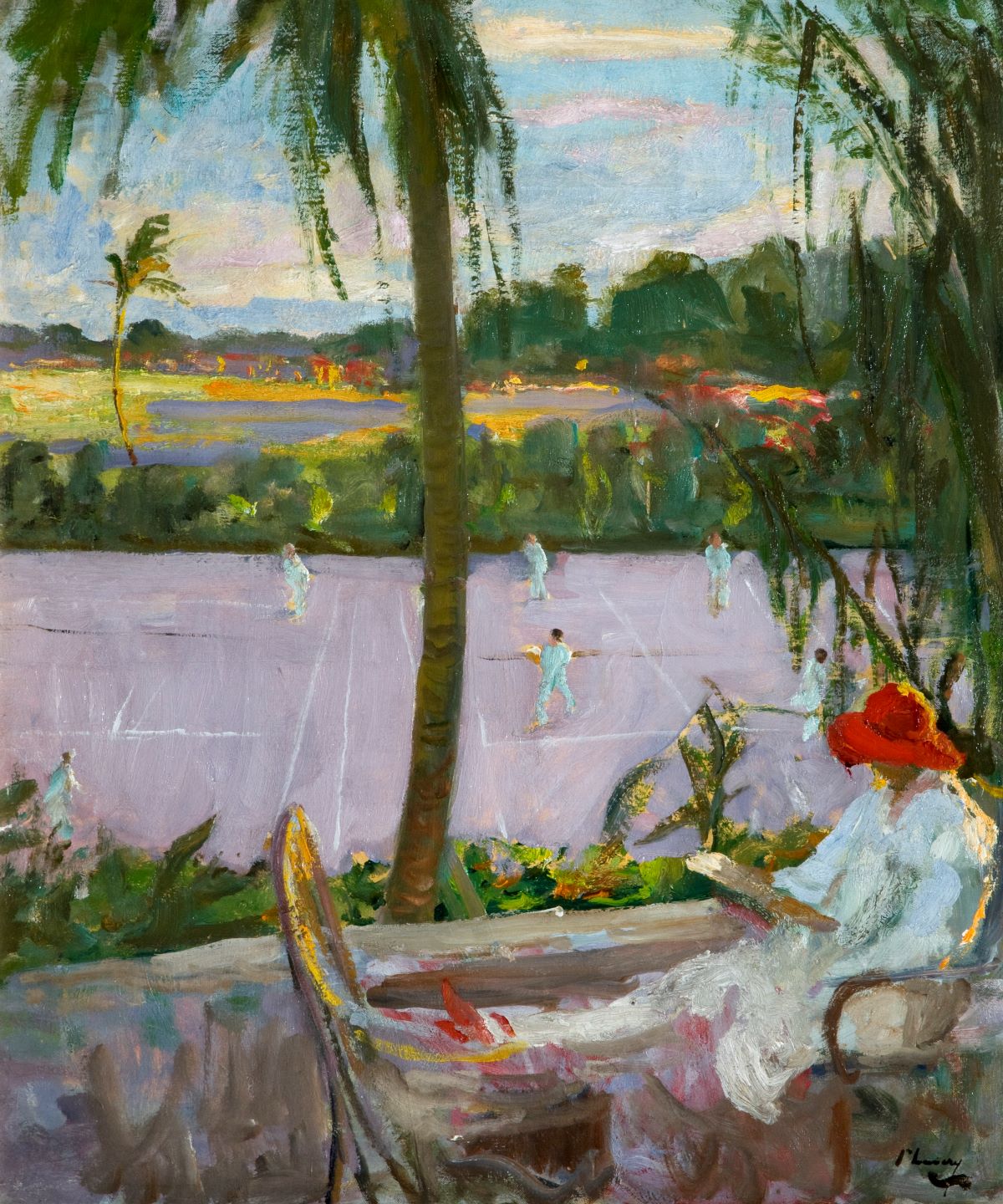
Take a voyage of discovery with Glasgow Boy Sir John Lavery
His travels took him from Belfast to Scotland and New York, via Paris and Morocco. But Glasgow Boy Sir John Lavery never travelled without his painting kit.
The latest exhibition of his work at the National Galleries of Scotland explores his incredible adventures through 90 portraits and impressionistic landscapes.
The glamour of a lost era can be enjoyed through Lavery’s work. From visits to the races, tennis matches and the golf course, to relaxing on warm days with friends.
He painted idyllic scenes in Tangier, St Jean de Luz, Palm Springs and the Venice Lido, as well as cities like Glasgow, Seville, Monte Carlo and New York.
An Irish Impressionist: Lavery on Location showcases some of his most notable paintings, including many works not usually seen by the public and nearly 20 paintings exclusively on display in Edinburgh.

Sir John Lavery, Windy Day, 1907-08, oil on canvas, private collection. Credit Neil Hanna
‘Lavery was a versatile painter who was equally at home in Scotland, North Africa and the French Riviera,’ Senior Curator Prof. Frances Fowle said.
‘His paintings offer, on the one hand, a nostalgic glimpse of a bygone era and, on the other, a modern world of sunshine and leisure.
‘Technically he was a true impressionist, intent on capturing a particular moment or atmospheric effect – perhaps night falling on Tangier, or early morning light, dancing on the crest of a wave.’
Born in Belfast, where his father ran a small wine and spirits shop in North Queen Street, Lavery was orphaned at the age of three, and moved to his uncle’s farm at Moira before being sent as a ten-year-old to a distant relative in Saltcoats, Ayrshire.
He first ran away to Glasgow at the age of 15 and went on to take early morning and evening drawing lessons at the Haldane Academy, completing his training at the Académie Julian in Paris.

Sir John Lavery, On the Cliffs, 1911. Photograph courtesy of the Richard Green Gallery, London
Along with a number of his fellow Scottish students Lavery worked at the colony of Grez-sur-Loing, near Fontainebleau.
Then, back in Scotland in 1885 he became one of the leaders of the much-loved group of artists known as the Glasgow Boys.
The Glasgow Boys rebelled against the stuffy Edinburgh-based art establishment and challenged the Academy’s emphasis on historical painting. Instead, their subjects were drawn from everyday life, often painted outdoors.
Lavery quickly attained an international reputation in his early 30s when he received a gold medal at the Paris Salon, the most prestigious art exhibition in the world at the time.

Enjoying great success after his move to London in 1896, Lavery combined his talents as a portrait painter with an interest in contemporary events and was later knighted in 1918.
As his style developed Lavery began to share some of the principal tenets of Impressionism. The movement was developed in France in the nineteenth century and is based on the practice of painting outdoors and on the spot.
Using lively brushstrokes, these artists often produced works of art rapidly in a single sitting. Like Lavery, the Impressionists were interested in capturing the changing effects of light, frequently exploring this through landscape scenes painted in the open air.
Lavery experienced enormous social, political and technological change during his lifetime, yet, despite his travels and worldly experience, Lavery’s connections to home – to Scotland and Ireland – remained strong throughout his long career.

BELUM.U593, Florida in Winter (1927), Sir John Lavery 1856-1941, Courtesy of National Museums NI, Ulster Museum Collection
‘In a career that spanned over sixty years, Lavery’s output was immense,’ Guest Curator Kenneth McConkey said.
‘He saw carthorses become ‘horse-power’, windjammers transform into steamers, and flying machines reborn as air liners.
‘Against a backdrop of immense social and political change, in the land of his birth, he witnessed the first cracks in the British Imperial entablature.
‘Visual reporting skills, perfected in Scotland, took him to extraordinary situations and while his works develop in fascinating ways, their basic premises – setting down what was before him – remained constant.
‘The same remarkable hand that brought us a Dutch Cocoa House in 1888 takes us to a tea-table in Palm Springs in 1938.’
An Irish Impressionist: Lavery on Location runs until 27 October.
Read more Culture stories here.
Subscribe to read the latest issue of Scottish Field.
TAGS

